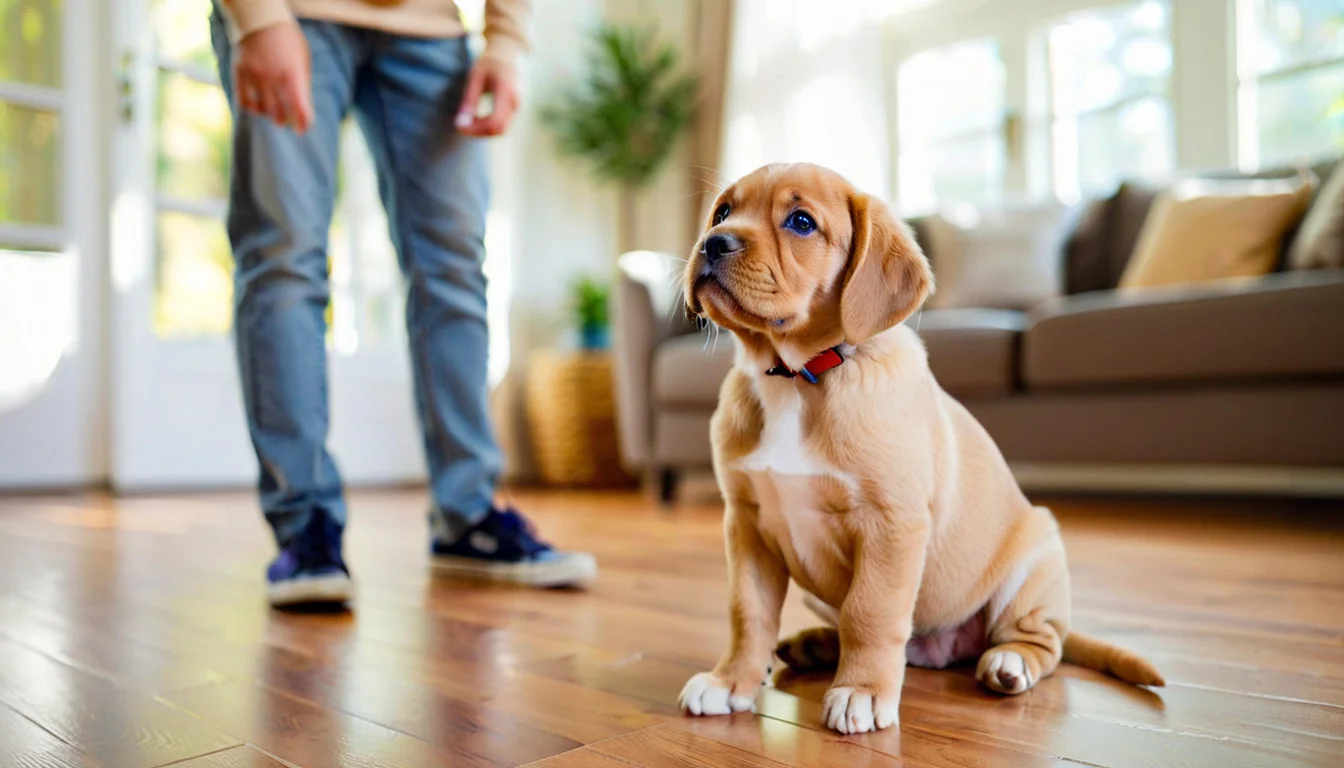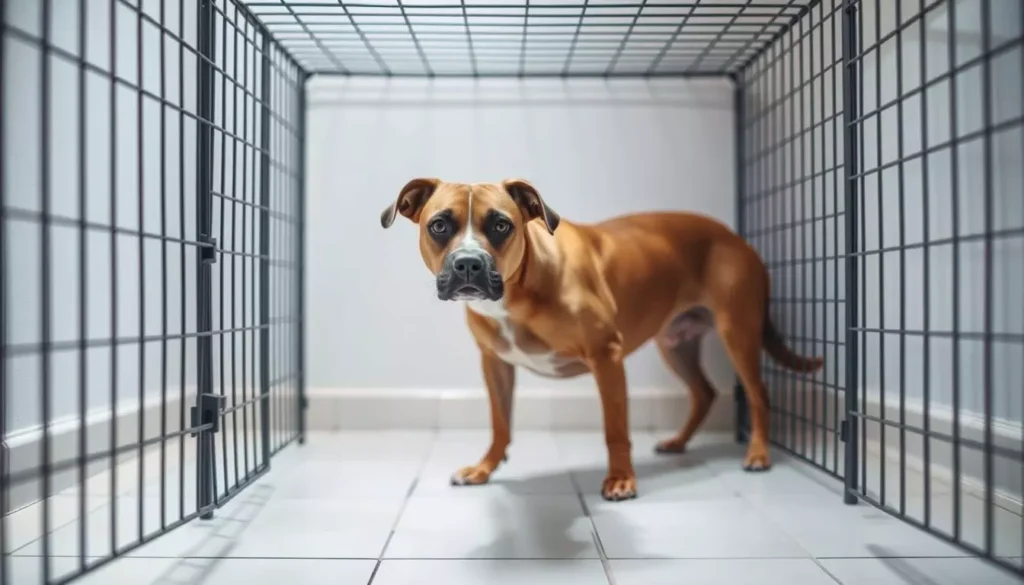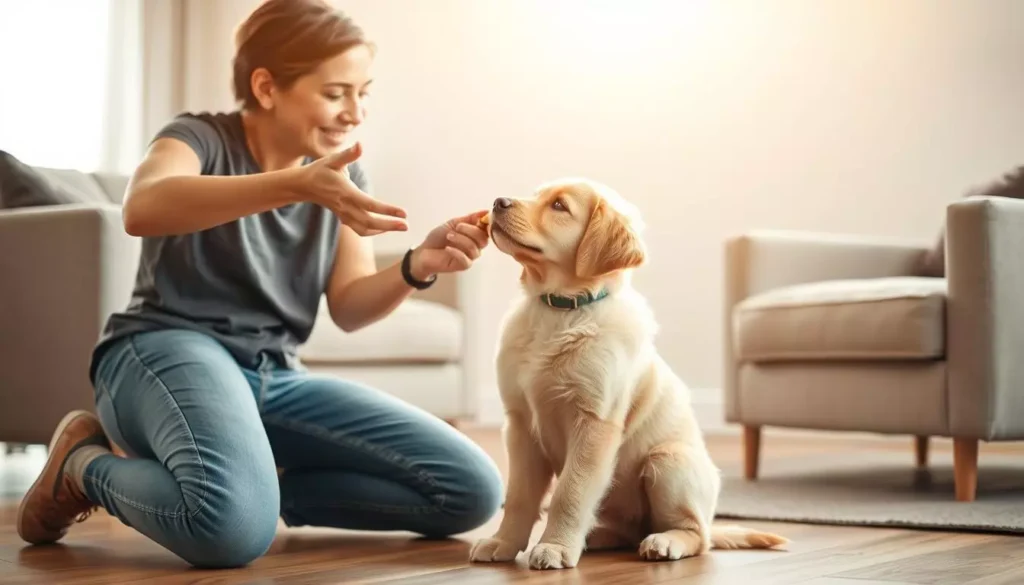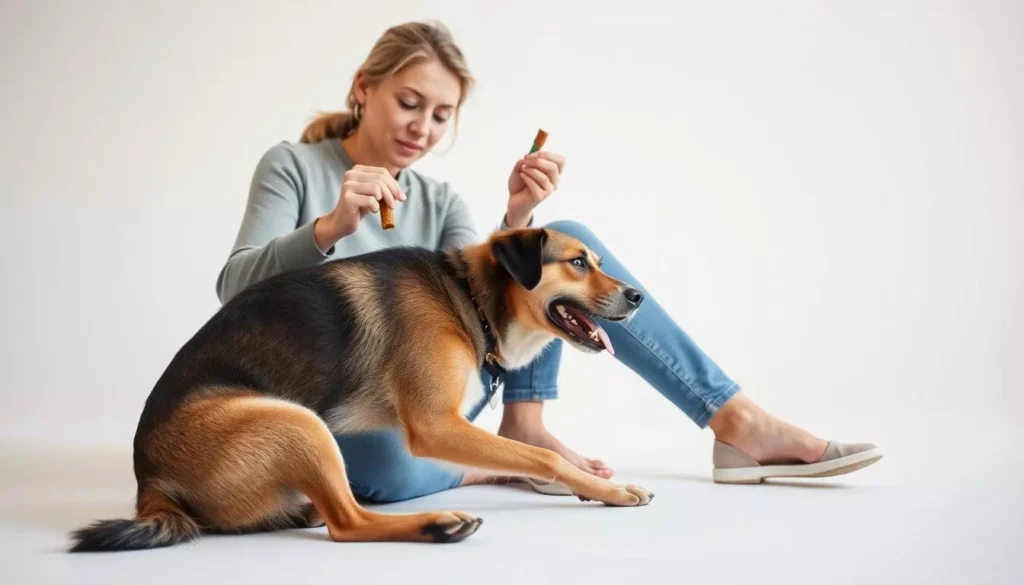I remember the first night with my Labrador mix. The quiet house felt full of tiny, urgent needs. I worried about mistakes and long weeks of accidents. But, I learned that planning and routines make a big difference.
This guide offers practical, evidence-based help. It covers crate training, scheduling, positive reinforcement, diet monitoring, and troubleshooting. I'll share puppy housetraining basics and realistic expectations. This way, you can set a pace that fits your life.
Timelines vary. Some puppies learn in three days, while others take months. The timeline depends on age, breed, and history. I'll explain what to expect and how to speed up progress.
Key Takeaways
- Plan before bringing a puppy home to set clear routines and expectations.
- Crate work and consistent breaks form the core of house training a puppy with a crate.
- Expect varied timelines; age, breed, and consistency affect progress.
- Positive reinforcement and diet control support puppy housetraining basics.
- This guide covers nights, apartments, older puppies, and training while you work.
Why house training a puppy matters for your home and relationship
Starting house training early makes life easier and keeps the home calm. Clear routines help us both know what to expect. Simple rules help the puppy feel confident and save me from cleaning and correcting.
Behavioral foundation and long-term benefits
Teaching a puppy where to go potty is key for other lessons. I use short, consistent sessions to teach boundaries without stress.
Good habits early on prevent adult dogs from soiling the house. They also help with obedience later on. These early benefits are huge when I teach commands like sit and come.
Health, hygiene, and household cleanliness
Keeping a regular potty schedule protects our home and air. I clean accidents with special cleaners to avoid scent marks.
Watching the puppy's stool helps me catch diet problems early. This keeps the puppy healthy and speeds up training.
Emotional benefits for owner and puppy
A well-trained puppy lowers my stress and makes our time together better. I reward good behavior with praise and treats. This makes going outside a positive experience.
This positive cycle strengthens our bond and prevents fear. Over time, we both feel more secure and trusting. This is one of the biggest benefits of housetraining.
Understanding puppy elimination biology and timing
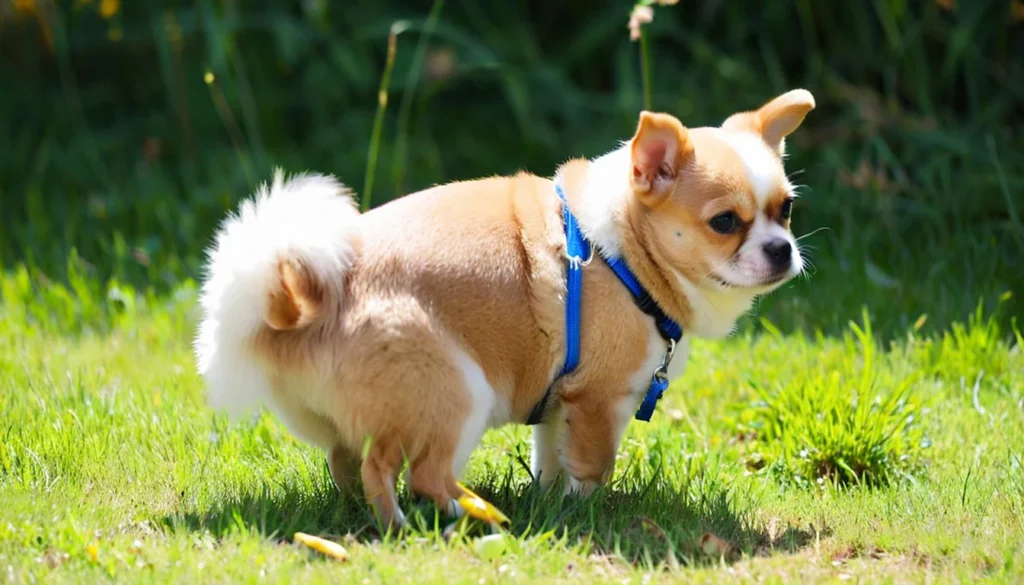
I study how puppies manage their bladder and bowel signals. This helps me set realistic expectations for house training. Young pups are not small adults. Their bodies and rhythms change fast in the first months.
I watch common patterns in bladder capacity by age to plan breaks and crate time. A rough rule of thumb is that puppies can hold their bladder for about the number of hours that equals their age in months. A 6-month-old may be ready for longer intervals than a 10-week-old. Very young puppies—six to fourteen weeks—need eight to ten chances a day to eliminate.
I pay attention to puppy elimination timing across the day. Most puppies need a trip outside after waking, after active play, and after meals. Short, regular outings cut down on accidents and teach routine.
I use the dog's den instinct when I crate-train. Dogs usually avoid soiling their sleeping area. A well-sized crate becomes a secure den and reduces indoor accidents. I keep the crate snug so the pup cannot set up a separate sleep and toilet corner in the same space.
I note breed differences in housetraining when I design a plan. Toy breeds often have smaller bladders and may need more frequent breaks. Working breeds sometimes catch on faster because they respond well to structure. Early life experience matters too; puppies from chaotic or neglected backgrounds may need patience and tailored measures like paper training or indoor potties while they learn.
I track each puppy’s individual cues and adjust expectations. Timing that works for one dog can fail for another. By combining biology, schedules, and breed differences in housetraining, I match care to the puppy’s needs and keep progress steady.
Crate training as a cornerstone of house training
I use a crate to help house train my puppy because it's a safe space. It also helps me manage their activities without always watching them. Here, I'll share tips on choosing the right crate, introducing it gently, and setting up routines for day and night.
Choosing size and type
I choose a crate that's just the right size for my puppy. It should let them stand, turn, and lie down comfortably. I use a divider to grow with my dog. For easy cleaning and travel, I prefer plastic crates. Big crates can make messes worse.
Introducing the crate positively
I make the crate a cozy spot by feeding my puppy there and giving treats. I also leave a safe chew toy to help them associate the crate with good things. I never punish my puppy in the crate. If they whine, I wait for them to be quiet before letting them out.
Night and day strategies
At night, I keep the crate next to my bed for easy access. This helps my puppy adjust to sleeping alone. I take them out in the morning and before bed to prevent accidents.
During the day, I limit their freedom until they're reliable. I use the crate for naps and when I'm away. If there's an accident, I check their schedule and recent habits to find the problem.
Practical crate training tips
- Start with short crate times and gradually increase them.
- Link the crate to a regular potty schedule to encourage good behavior.
- Choose easy-to-clean bedding and change soiled liners right away.
- Don't force your puppy into the crate. Use treats and praise to encourage calm entry.
Creating a consistent housetraining schedule
I make a daily plan for my puppy. This includes meals, naps, play, and outdoor breaks. It's easy to follow and helps the puppy learn when to go.
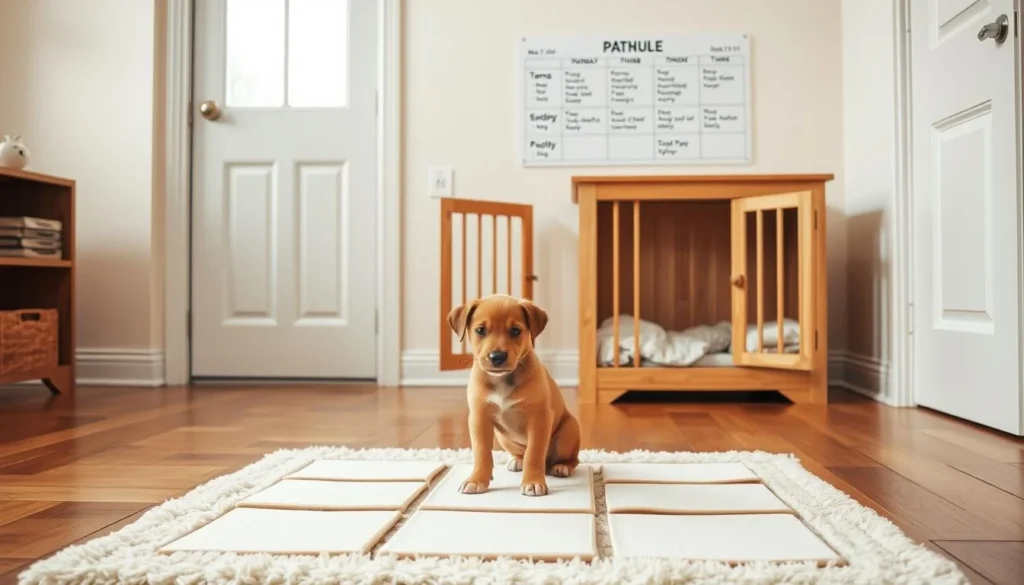
I feed my puppy at the same times every day. After eating, drinking, naps, exercise, and crate time, we go outside. This helps the puppy learn to go after these activities.
Meal times, elimination breaks, and naps
I keep meal times and portion sizes the same. This makes it easier for the puppy to know when to go. We go outside right after meals and in the morning.
Short naps are followed by a trip outside. Exercise and play come before going outside. This helps avoid accidents and teaches good habits.
Sample daily routines by puppy age
I adjust the number of outings based on the puppy's age. Young puppies need many short breaks. Older puppies can wait longer.
| Age | Breaks per day | Key times to take out | Notes |
|---|---|---|---|
| 6–14 weeks | 8–10 | Wake, every 1–2 hrs, after meals, naps, play, bedtime | Very frequent outings; short supervised play sessions |
| 14–20 weeks | 6–8 | Wake, every 2–3 hrs, after meals, naps, bedtime | Begin slightly longer intervals; keep routine steady |
| 20–30 weeks | 4–6 | Wake, mid-morning, midday, late afternoon, evening | Longer focus sessions; reinforce outdoor rewards |
| 30+ weeks | 3–4 | Wake, morning, afternoon, evening | Move toward adult schedule; maintain consistency |
Adjusting the schedule when you work or travel
When I work outside the home, I arrange for help. A dog walker, neighbor, or pet-sitter keeps the routine. This avoids long gaps that confuse the puppy.
If I use puppy pads or an indoor potty, I plan a transition to outside. I treat pads as temporary tools, then focus on outdoor elimination.
When I travel, I stick to feeding times and bathroom breaks as much as possible. I use a crate or small space to protect the puppy and my lodging. Keeping the routine consistent during trips reduces stress and accidents.
House training a puppy at night
I want my nights to be calm and my puppy to sleep well. Setting up a good nighttime routine is key. Making small changes before bed helps with house training and keeps the peace.
I limit my puppy's water in the evening, as my vet advises. I give them a final potty break before bed. For the first weeks, I keep the crate near me so I can hear them.
A quiet, predictable routine before bed helps my puppy relax. It makes following nighttime housetraining tips easier and stress-free.
When to expect night control improvements
How fast a puppy learns to control their bladder at night depends on their age and size. A general rule is that a pup can hold their bladder for about as many hours as they are months old. However, this can vary.
My experience with house training a puppy showed steady progress. At first, they needed to go out often, but as weeks went by, they needed to go out less.
Handling nighttime accidents and interruptions
Accidents can happen. If I catch my puppy in the act, I interrupt calmly and take them outside right away. I never punish them after the fact.
I clean up accidents with an enzymatic cleaner to remove any lingering smells. This helps prevent them from happening again. If my puppy wakes up a lot, I adjust their schedule and where I place their crate to help us both sleep better.
| Night Strategy | What I Do | Expected Result |
|---|---|---|
| Limit evening water | Stop free water 1–2 hours before bed if vet approves | Fewer late-night needs, easier house training a puppy at night |
| Last-potty routine | Take puppy out immediately before bedtime; use same cue | Stronger association between cue and elimination |
| Crate placement | Keep crate in bedroom for early weeks to hear signals | Quicker response to needs, faster night control puppy gains |
| Accident handling | Interrupt calmly, move outside, clean with enzymatic cleaner | Reduces repeat accidents and helps nighttime housetraining tips work |
| Timeline check | Track nights without trips and adjust schedule as needed | Clear picture of my house training a puppy timeline and progress |
House training a puppy in an apartment
I live in an apartment and learned that clear routines and small steps are key. With limited outdoor access, planning is crucial. I keep routines simple so my puppy knows what's expected.
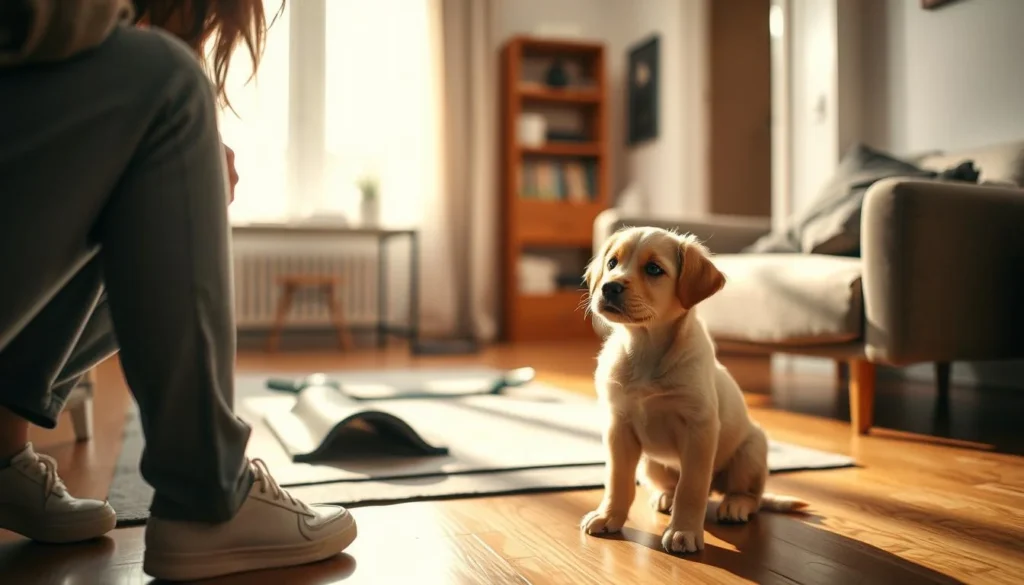
I use a schedule for my puppy's meals, potty breaks, and naps. A regular routine helps with bladder control and reduces accidents. I start with short breaks and gradually increase the time as the puppy grows.
When going outside is hard, I weigh the pros and cons of puppy pads and outdoor potty breaks. For small breeds or bad weather, I use a dog potty box by the door. I plan a clear path from pads to outside when possible.
Managing limited outdoor access
I have a plan for bad weather and late nights. Portable potty options or a balcony turf patch help during storms. I keep these clean and only use them on scheduled breaks to avoid confusion.
I train the puppy to walk on a leash in the hall and elevator. This makes outdoor trips quick and calm. I reward the puppy right after they go outside to strengthen the connection.
Dealing with neighbors and building rules
I read my lease and check pet policies before getting a puppy. I always clean up after my puppy in common areas. When I work late, I place the crate in a quiet area to avoid noise.
I work with a trusted neighbor or a local walker when I'm away. Short outings help keep the puppy on schedule and prevent long breaks. A consistent plan keeps everyone happy and the puppy calm.
Creating a small-space routine and confinement plan
I use a crate or pen as a cozy den when I'm busy. It's equipped with bedding and a toy. I gradually give more freedom after several days without accidents.
I tie feeding times to potty breaks for predictability. When I work, I arrange supervised breaks or a midday visit. Consistency in all areas helps with steady progress.
House training a puppy 5 months old and older puppies
I focus on practical steps for a 5-month-old pup and for older puppy housetraining. Dogs at this age can hold longer and follow routines better. I keep my advice simple so you can start right away.
A 5-month-old puppy usually has better bladder control. They can hold for four to five hours during the day, depending on their size and breed. This makes it easier to adjust the house training timeline.
I adjust praise and rewards to help the puppy wait until outside. Short, consistent trips work better than long, sporadic ones. I avoid confusing cues that slow progress.
Handling setbacks in older puppies
Older puppies can regress after stress, a schedule change, or a medical issue. If soiling continues, I recommend a vet check for urinary tract infections or digestive problems before changing training tactics.
I use steady management when problems arise. This means extra supervised breaks, limiting freedom, and returning to crate or confinement routines until the pattern stops. If behavior looks anxious or stubborn, I consult a certified trainer or veterinary behaviorist.
Moving from pads or indoor potties to outside
Pads teach a location cue that competes with outside goals. I suggest a gradual plan: move the pad a few feet each day toward the exit, then place it just outside the door. This helps the puppy link the scent to outdoors and eases the transition from puppy pads.
While shifting, I reduce pad use and reward every successful outdoor elimination with treats and calm praise. I clean indoor accidents with enzymatic cleaners so old smells don't invite repeat marking. Patience and a clear house training a puppy timeline prevent backslides.
| Step | Action | Why it works |
|---|---|---|
| Assess holding time | Track intervals for three days, aim for 4–5 hours | Sets a realistic house training a puppy timeline and prevents accidents |
| Shift pads gradually | Move pad toward door, then outside over 7–10 days | Creates a smooth transition from puppy pads to outdoor elimination |
| Reinforce outdoors | Use treats and short praise immediately after success | Builds positive association with outdoor toileting for older puppy housetraining |
| Manage setbacks | Check vet, increase supervision, return to confinement if needed | Addresses medical causes and resets habits without punishment |
| Maintain schedule | Consistent meals, exits after naps and play, evening routine | Supports a steady house training a puppy timeline and reduces confusion |
Using positive reinforcement and communication techniques
I use clear cues and quick rewards to teach good habits. When I pair a short praise word with a treat, the puppy learns where and when to go. This method supports positive reinforcement puppy training and keeps sessions short and consistent.
I use a simple marker phrase like “GOOD OUTSIDE” the moment the puppy finishes. I give a tiny, chewable treat right after the marker. This timing helps the puppy link the action with the reward. I avoid making promises like house training a puppy in 5 days because it's not realistic.
I interrupt accidents calmly if I catch the puppy in the act. A soft clap or a gentle call gets their attention. I pick them up and carry them outside to finish. I never scold after the fact because delayed correction confuses the puppy. This method of interrupting puppy accidents protects trust and speeds learning.
I teach a signal for asking to go out by rewarding the behavior immediately. A bell on the door or a mat by the threshold works well. When the puppy touches the bell, I open the door and praise if they eliminate outside. Repeating this builds a clear routine for teaching puppy to ask to go out.
I keep practice quick and positive. Short, frequent trips outside after meals and naps reinforce timing. I make sure rewards match the effort: small treats for success, calm guidance for mistakes. This balance makes progress steady and clear for both of us.
Monitoring diet, digestion, and schedule for success
I focus on feeding and digestion because they shape predictable elimination. A steady feeding schedule puppy helps me plan potty breaks and reduces surprises. I watch patterns rather than panic at a single accident.
I keep meals consistent. For very young pups, I offer three small meals a day. As they grow, I shift to two meals. This feeding frequency and its effect on elimination makes trips outside more reliable.
I log meals and potty times for a week. That habit reveals how diet effects on housetraining show up in timing. If a meal at 7 a.m. usually leads to elimination at 8:30 a.m., I set a break slot there every day.
I check stool regularly. Bulky, loose, or very smelly stool can signal a problem. When I spot those signs, I contact my veterinarian about ingredients and portion sizes. Recognizing diet-related problems early prevents longer setbacks.
Diet type changes transit time. Kibble often passes slower than fresh or all-natural diets. I plan outings with this in mind so I avoid late-night surprises. I never switch foods abruptly without vet guidance.
I use short notes to track reactions to new formulas. If digestion shifts or timing slips, I adjust the feeding schedule puppy and the potty calendar at once. Tracking helps me see how house training a puppy and digestion connect.
I test small tweaks: a slightly smaller portion, a different feeding time, or a single-ingredient trial diet. Each tweak shows whether diet effects on housetraining improve or worsen. I keep changes minimal and watchful.
When managing slow progress, I partner with my vet and a trainer. Their input helps me match food type, feeding frequency, and crate breaks. That combination gives the puppy the best chance of steady improvement.
Troubleshooting common housetraining challenges
Many owners hit a snag when house training their puppies. Small changes can make a big difference. I'll share three common problems and how to solve them.
First, let's tackle accidents in the same spot. A puppy might think it's okay to go there because of a scent. I recommend using an enzymatic cleaner to remove the smell. Then, I block access to that area until the puppy learns not to go there.
Next, I help owners create a routine. This includes supervised walks and short periods in the crate after cleaning. This helps break the habit of accidents in the same spot.
Now, let's talk about crate soiling. This can happen if a dog learned bad habits before coming home. Or, it might be because their bladder isn't fully developed yet. I check if the crate is the right size and make sure the puppy can't sleep where they go to the bathroom.
I also make sure the puppy eats and goes to the bathroom at regular times. This helps prevent accidents in the crate.
If crate soiling continues, I suggest a vet visit. They can check for health issues like urinary tract infections. With strict crate rules, a schedule, and vet advice, most dogs can learn to use the crate correctly.
Anxiety and separation can also cause accidents. If a vet says there's no health issue, I look for stress triggers. I use techniques like counterconditioning and short, gradual departures to help the puppy feel more secure.
For a five-month-old puppy, I treat them like a growing teenager. I stick to a schedule, take them out often, and set clear boundaries. This helps them learn to control their bladder and bowels.
| Problem | Quick Actions | When to Seek Help |
|---|---|---|
| Repeated accidents same spot | Use enzymatic cleaner, block area, add repellent, increase supervised outings | After two weeks of consistent cleaning and schedule if accidents continue |
| Crate soiling | Check crate size, tighten feeding/elimination times, add outdoor breaks, resume strict crate rules | If soiling persists or puppy shows signs of illness |
| Anxiety or separation-related elimination | Implement desensitization, short departures, calming strategies, consistent routine | When anxiety is severe or behavior worsens; consult trainer or veterinary behaviorist |
How long does house training a puppy typically take
Owners want a clear timeline for house training a puppy. But, timelines can vary a lot. Some puppies learn quickly in days with the right care. Others might take weeks or months due to their age, past living conditions, breed, schedule, diet, or health issues.
Realistic timelines and what influences speed
Young puppies usually follow an age-in-months guideline for holding times. But, they need to learn where to go. A well-managed four-month-old might be mostly dry in a few weeks. Yet, a very young or stressed puppy could take months to be reliable.
Things that can speed up or slow down progress include a consistent routine, crate use, feeding schedule, breed tendencies, past housetraining, and health issues. It's wise to track accidents and patterns to find useful changes.
Milestones to watch for
Early signs include signaling to go out, fewer accidents in the same spots, and staying dry during naps. Nighttime control often gets better before daytime reliability.
Later, look for milestones like safe freedom in bigger rooms, long dry periods matching the puppy’s age, and consistent ability to hold through the night. These signs show real learning, not just luck.
When to escalate help
If a young puppy keeps soiling despite careful management, get a vet check for infections or medical issues. If a reliable dog starts soiling suddenly, see a vet right away.
If behavior persists after medical checks, talk to a certified trainer or a vet behaviorist. Knowing when to seek help can save time and reduce frustration for both you and the puppy.
House training a puppy in 5 days (realistic assessment)
Quick programs promise fast fixes, but house training a puppy in 5 days is rare. It works for older puppies, consistent handlers at home all day, and no health issues. Five days can show progress, but it's not always full reliability.
To stay realistic, consider your schedule and the puppy’s history. Plan for variations, celebrate small wins, and get professional help when patterns don't improve.
Conclusion
House training a puppy involves planning, crate training, and a consistent schedule. Immediate rewards for good behavior and thorough cleaning of accidents are key. If you face setbacks, get veterinary advice or a professional trainer.
Remember, progress depends on the puppy's age, breed, and history. Patience and steady management are crucial. I focus on building reliable routines and rewarding good behavior.
Before bringing your puppy home, set up a crate and a daily schedule. Keep enzymatic cleaners and treats ready. Arrange for someone to walk your puppy on workdays.
Consistency and calm problem-solving are essential, whether you work or stay home. Stick to the basics, adapt as needed, and celebrate small victories. These steps lead to long-term success.

